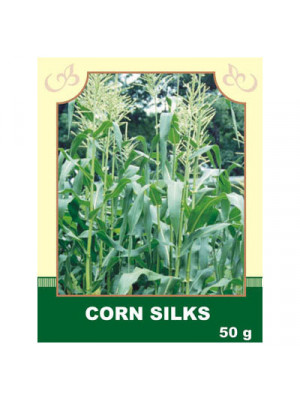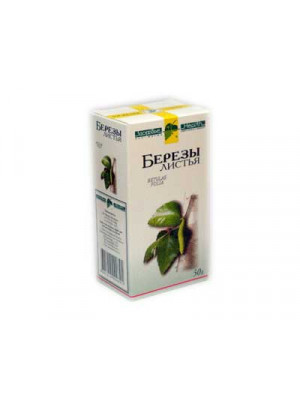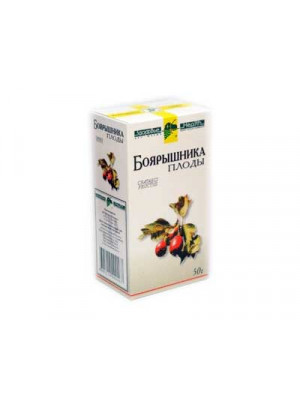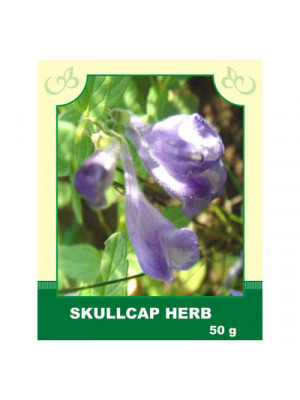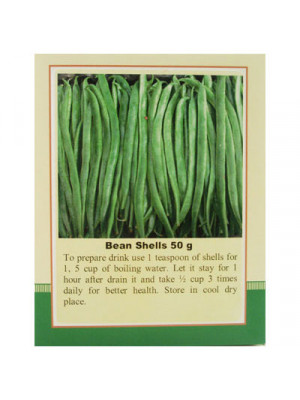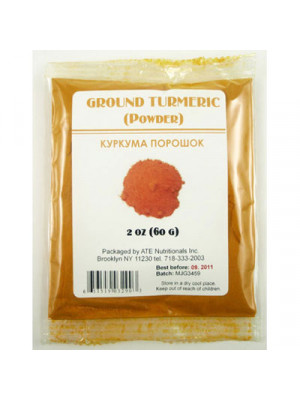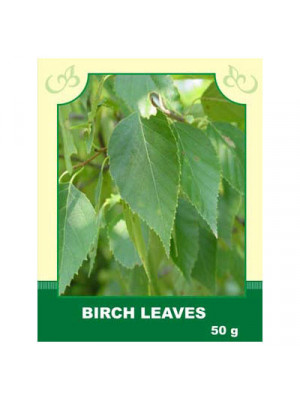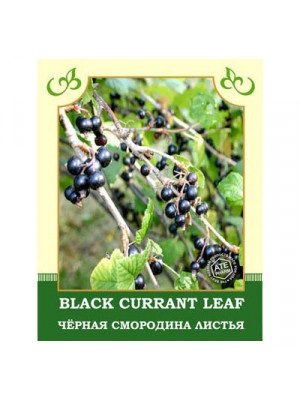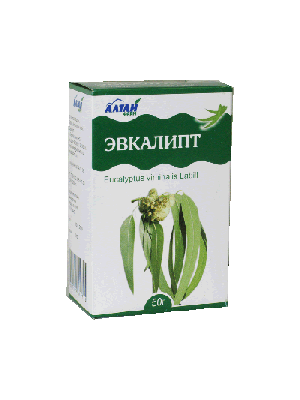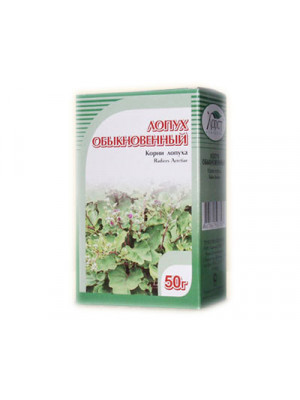Herbs
Internally, it is taken as a cholagogue for cholecystitis, cholangitis, hepatitis with delayed bile secretion; as a diuretic for kidney stones and bladder stones, dropsy, and obesity; in the treatment of atherosclerosis and hypertension; in gynecology.
Method of application and dosage: 3 tablespoons of raw material are poured with 200 ml of boiling water, heated in a water bath for 30 minutes, infused for 10 minutes at room temperature, strained, squeezing out the remaining raw material. The resulting infusion is brought to the original volume, taken in 1/4 cup every 3-4 hours.
Contraindications: individual intolerance.
$6.99Internally, infusion and decoction from birch leaves are used as a diuretic, for disorders of the nervous system, jaundice, as an anti-inflammatory and vitamin remedy, for atherosclerosis, and rheumatism.
Method of application and dosage: Decoction: 2 tablespoons of birch leaves are brewed in 500 ml of boiling water, boiled for 15-20 minutes, strained, and taken throughout the day. Infusion: a tablespoon of birch leaves per 250 ml of boiling water, infused for 3-4 hours, strained, taken 1/2 cup twice a day.
Externally, for joint diseases, compresses from fresh leaves applied to the area of affected joints or baths from a decoction of leaves are used.
Contraindications: Individual intolerance.
$6.99- Hawthorn is a plant very popular in Chinese and Japanese medicine. The plant is believed to strengthen cardiovascular function. Hawthorn is also used as an aid to lower blood pressure, lower cholesterol, and treat some heart related diseases. The herb called the hawthorn is one of the best herbs to boost the performance of the heart and the human circulatory system in general. Regular supplementation with this herb can thus help bring some balance blood pressure and it is considered to be excellent for heart.$6.99
Internally. The main purpose of motherwort is to regulate blood pressure. Motherwort preparations dilate blood vessels, slow down the rhythm of heart contractions, eliminate headaches and insomnia, lower blood pressure associated with atherosclerosis, prevent seizures, and slow down the functional activity of the nervous system.
Method of application and dosage: Tincture of 25 drops 3 times a day before meals.
Contraindications: Individual intolerance, pregnancy, breastfeeding.
$8.99Internally: The main properties of bean pods: reduce and eliminate inflammatory processes; have a diuretic effect; normalize blood glucose levels; accelerate recovery from viral diseases. Normalize the functioning of the cardiovascular and urogenital systems.
Method of application and doses: For brewing, 2 tablespoons of dried crushed bean pods are poured with warm boiled water (2 cups). Then place it in a water bath for a quarter of an hour and infuse for another hour. When following all the rules, the plant will release the maximum nutrients into the decoction. To dilute the concentrate, add water to the original volume and boil again. Take 1/2 cup 3 times a day, preferably before meals.
Contraindications: Individual intolerance, during pregnancy, breastfeeding, and for those suffering from allergies.
$6.99Internally, it helps to thin the blood, which stimulates a decrease in blood pressure; improves appetite, cleanses the body; supports liver function as a natural antioxidant; helps regulate weight.
Method of application and dosage: Prepare a drink with milk, adding this ingredient and ginger. Pour a quarter cup of water into a saucepan. Add half a small spoonful of turmeric and a whole spoonful of ground ginger. Mix everything and add a cup of milk. Bring to a boil over low heat. To taste, you can add a little honey and a pinch of cinnamon. It's better to consume such a healing drink before bedtime.
Externally applied for gargling with SARS, wrapping for weight loss.
Method of use and dosage: For SARS, add 1 tsp of salt and ½ tsp of turmeric powder to 400 ml of warm water for gargling. For wrapping: in 100 g of blue clay, diluted with water, add 1 tbsp of yellow powder, 1 tsp of cinnamon. Then add 8 drops of grapefruit, lemon, or orange essential oil. Apply to steamed clean skin, wrap not too tightly with film, cover with a blanket. After 40 minutes, remove with cool water. Repeat once a week for a course of 4-5 times.
Contraindications: pregnancy; individual intolerance; contraindicated in gastritis and pancreatitis patients; the daily intake dose is 1.5 tsp; do not take this seasoning along with other medications.
$5.99
Description. People have been using birch for therapy and healing since ancient times. Almost all parts of this tree have special properties valuable for health. Birch leaves act as anesthetic, anti-inflammatory, wound healing and antimicrobial. They help cope with pathogenic bacteria and fungi; improve blood circulation, and reduce thrombus from the smallest blood vessels.Birch leaves contain many of bioactive substances acids, flavonoids, rutin, tannins, vitamins C, E, PP and carotin. They help lower blood pressure. Use. Nowadays birch leaves preparations are used in cases of avitaminosis, edema, urinary bladder inflammation, atherosclerosis, kidney disorders and as cholagogic and expectorant. Leaves decoction is tonic and restorative and is useful for wet eczemas and climacteric neurosis. Birch leaves are used for flushing kidney and bladder stones, and for urinary infections. Preparations made of them are good for bronchitis, gastritis, stomach ulcers, edema and gout. Birch leaves are also valuable for various skin problems and help in coping with pathogenic microbes, fungi and inflammations. Finally they are known also to stimulate hair growth.
Attention! Before using any herbal products, make sure that you have full knowledge of how the herb works and any adverse reaction it may cause.$6.99Internally: Tinctures strengthen the immune system, improve mood; used for chronic cough, frequent colds, gout, arthritis. The tincture reduces tissue swelling, lowers blood pressure. Infusions are absorbed more slowly, but their effect is longer. They will help restore strength after a prolonged illness, protect the body during flu and viral infections, improve memory.
Method of application and dosage: For the infusion, 2 tablespoons are poured with 1 glass of boiling water and infused for 10-15 minutes. Strain and drink with honey. For the decoction, 100 g is poured with 2 liters of boiling water and placed in a water bath for 10-15 minutes. Infuse for 10 hours. For a cough, drink 100 g until the illness subsides. The decoction will better help cope with fatigue and overwork.
Contraindications: Individual intolerance, avoid with stomach ulcers, gastritis with high acidity; use in limited quantities during pregnancy and lactation.
$6.99- Description. Native to Australia, the Eucalyptus is a traditional Aboriginal remedy for a variety of ailments. Today, it is used worldwide for many common problems. Eucalyptus leaves contain volatile oils, tannins, organic acids. Eucalyptus is antiseptic; it reduces muscle tension and spasms; expectorant; stimulant; reduces or prevents fever. Externally, the antiseptic, slightly anesthetic, anti-bacterial, and warming properties of Eucalyptus make it a valuable resource treatment of burns, sores, ulcers, scrapes, boils, and wounds.
Use. Internally, Eucalyptus appears to help relieve symptoms of colds, flu, chest congestion, sore throat, bronchitis, pneumonia, and respiratory infections. For internal use, Eucalyptus can be made into a tea or tincture. Teas can also be used as a gargle for relief of sore throat. Externally, the antiseptic, slightly anesthetic, anti-bacterial, and warming properties of Eucalyptus make it a valuable for burns, sores, ulcers, scrapes, boils, and wounds. Applied topically as an oil or ointment, it also helps relieve the pain of rheumatism, aching, pains, stiffness, and neuralgia. For outdoor enthusiasts, Eucalyptus rubbed into the skin seems to work well as an insect repellant. Rubbed into the chest, it relieves congestion and cough.
Attention! Before using any herbal products, make sure that you have full knowledge of how the herb works and any adverse reaction it may cause.$6.99 - Burdock Root is one of the foremost cleansing herbs, providing nourishing support for the blood, the liver, and the natural defense system. Its rich in Vitamins B1, B6, B12, and E, plus manganese, copper, iron, zinc, sulfur, and more. Youll find Burdock Root in many tonic formulas and special blends designed for internal cleansing. In traditional herbal texts, Burdock Root is described as a blood purifier or alterative, and was believed to clear the bloodstream of toxins. The herb contains polyacetylenes that have both anti-bacterial & anti-fungal properties. Burdock Root contains high amounts of inulin and mucilage. This may explain its soothing effects on the gastrointestinal tract. Bitter constituents in the root may also explain the traditional use of Burdock to improve digestion.$6.99


